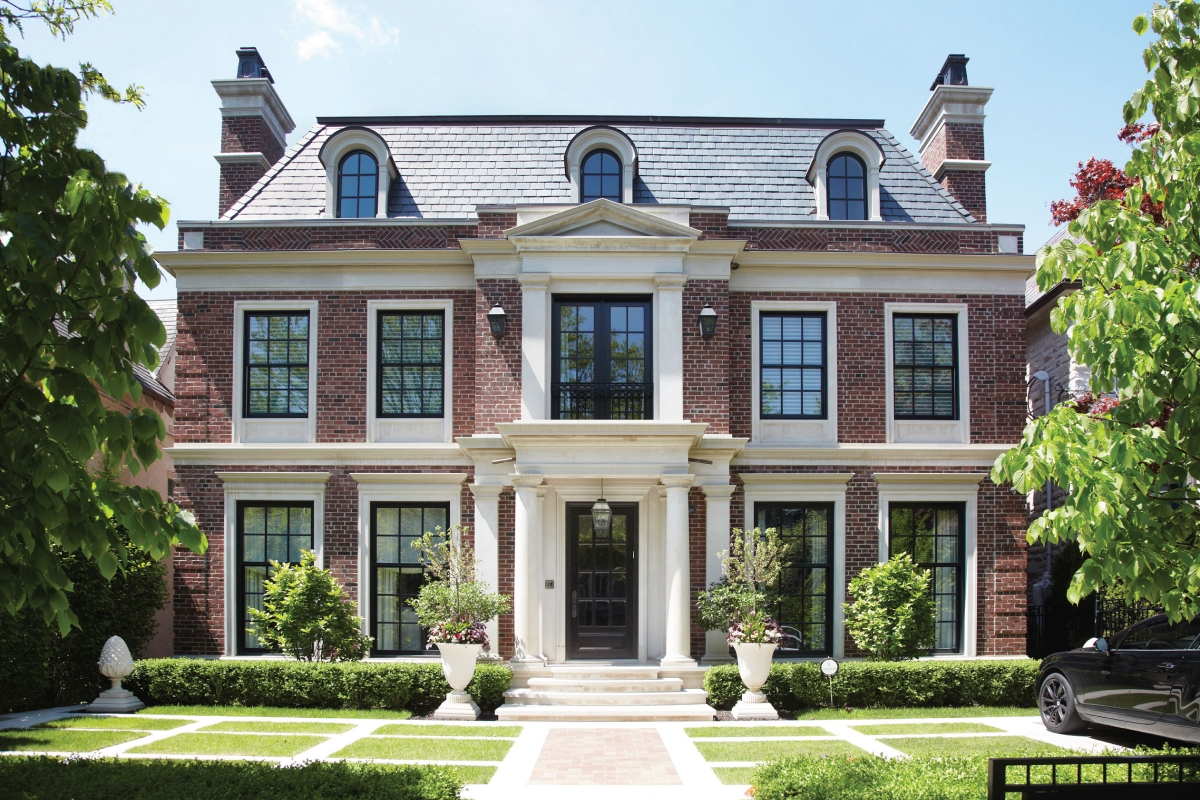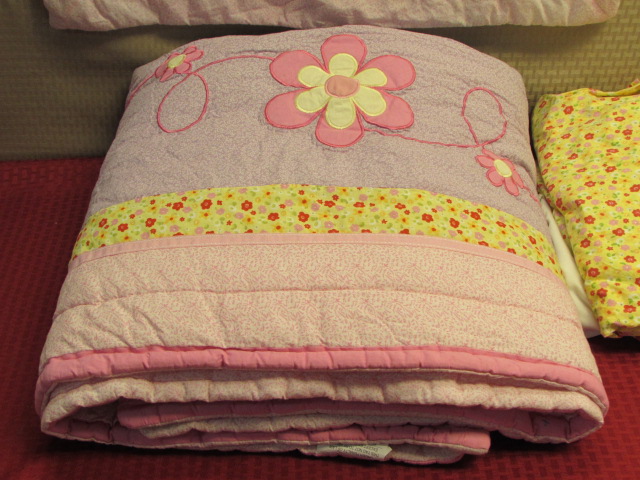Edwardian house designs are popular options for homeowners looking for opulence and grandeur. This classic style combines both classical and modern elements – from the intricate moldings and windowsills to the most up-to-date building materials. Characterized by notably large windows, tall ceilings and spacious rooms, Edwardian style homes favor a symmetrical layout that is often structured around an inviting, grand entryway. Edwardian houses are designed for the utmost luxury and tend to be quite elegant, making them ideal for those seeking out a home that is both regal and welcoming.Edwardian House Design
The Georgian house design is a branch of the classic European style that originated in the early 1700s. Drawing inspiration from the architecture of ancient Greece and Rome, the Georgian house features a neat and symmetrical facade in stunning red brick. Characterized by amdoube-hung sash windows, freestanding columns, and delicate ornamentation, the Georgian style is often seen in more affluent areas of the country. With its classic proportions and elegant finishes, this style of house lends itself to an eye-catching, classical beauty.Georgian House Design
The Victorian house design, often referred to as a classic England style, is a type of architecture that originated during the reign of Queen Victoria. This traditional style of architecture is characterized by its intricate detailing, which often includes elaborate ornamentation, lacy spindles, and beveled windows. Although many of the original Victorian houses were built with wood, brick, and stone, many modern interpretations of this style make use of modern cladding materials like stucco, vinyl, and glass block.Victorian House Design
The Regency house design is a neo-classical type of architecture that emerged during the late 18th century. This style often makes use of light-colored exterior cladding, such as stucco or stone, and has the potential to be both modern and classic. Regency style homes often feature a graceful façade with wide windows, wrought iron accents, dramatic gables, and a hallmark portico that takes center stage. The classic Regency house is designed for gracious living and offers plenty of intricate craftsmanship.Regency House Design
The Tudor house design draws its inspiration from the late medieval to early Renaissance period and is characterized by its steep rooflines, its decorative half-timbering, and its combination of brick and stone. Often found in affluent suburban neighborhoods, these homes are most notable for their steep roofs, large chimneys, and tall gables. The exterior of a Tudor house combined with the interior’s characteristic wood-paneling can give it a charming, cozy, and just-out-of-fairytale quality. Tudor House Design
The Arts and Crafts house design is a type of architectural style that developed during the late 19th to early 20th century movement. This classic style is well known for its handcrafted elements and materials, and often makes use of natural materials like wood and stone to add an organic feel. Arts and Crafts homes have many distinct elements, including steeply pitched rooflines, large and welcoming front porches, and overhanging eaves. Available in a variety of sizes and and shapes, these homes make an inviting statement about traditional craftsmanship. Arts and Crafts House Design
The Queen Anne house design is a type of Victorian style architecture that began in England and came to the United States in the late 19th century. Characterized by intricate detail, including elaborate spindles, stained glass windows, clipped gables and ornate spandrels, this style of home is often quite eye-catching. The Queen Anne home generally has a modest, symmetrical shape with two or three stories. Most also feature a spacious front porch, deck or balcony, and inviting front door.Queen Anne House Design
The stilt house design is a type of architecture that has been used throughout history in many different cultures. This unique style relies partially on its elevation and the stilt supports, keeping the home above water or marshland. Typically, a stilt house utilizes wooden poles to hold the house off the ground. Often, this type of house is used near marshes and in coastal regions where the stilts protect the home from flooding and storm surges. Stilt house designs come in a variety of shapes and sizes, making them one of the most versatile house types around. Stilt House Design
The basement house design is growing in popularity, and is perfect for those looking for added space and privacy. These homes take advantage of the naturally cool space below ground, typically featuring a basement living space with a full kitchen, bathroom, and bedrooms. Basement house designs are incredibly energy efficient, often greatly reducing the overall energy bills while providing an extra layer of protection against disasters like floods or fires. The right basement house design can help owners make the most of their space. Basement House Design
Mill house designs were once quite common in mill towns throughout the United States. This type of house featured several stories stacked on top of each other, with the one below often used for machinery, storage, or residential purposes. The development of this type of house follows the post-industrial era of the US, where mills were some of the first industries to adopt the structural type and take advantage of the space saving designs. Mill house designs still appear today, and offer a unique and interesting shape.Mill House Design
Terraced house designs are a type of Victorian style architecture that took over the UK during the mid-1800s. Characterized by their narrow shapes, tall chimneys, and small yards, these properties were built quickly. Today, terraced designs are still common, and offer an attractive option for potential homeowners. They generally feature two stories or more and often feature external front doors and steps leading to the front porch. This type of house has the potential to be very affordable, and therefore has become a great option for many buyers.Terraced House Design
An Overview of British Classic House Design
 British classic house design has become an iconic, yet timeless way to create an atmosphere of warmth and elegance in any home. Characterized by brickwork, natural materials and large windows, the British classic house design has been adopted all over the world, by modern architects, as well as those committed to celebrating the traditional style. From the
Georgian
to the Arts and Crafts movement, British classic house designs offer something for every taste and need.
Large windows, often with shutters, are a common feature in British classic architecture. These windows let plenty of natural light into the home, reducing reliance on artificial means of lighting. British homes often have more windows than other, more modern, styles of architecture.
Window boxes
can also be added to the home, further enhancing the traditional feel.
Fireplaces, set in brick, may also be found in British classic houses. These are both a practical way of keeping warm, and a wonderful aesthetical addition. It's commonplace for fireplaces to be set against a wall of brick, painted white or cream, that has the added bonus of creating a focus around which furniture may be arranged in the room.
The exterior of a British classic house often has a box-like shape to it, with multiple levels, and intricate detail which serves to emphasize the British traditions. A
portico or an open porch
is usually the first part of the house people will see when they knock or walk up the path. These are often made using brickwork, limestone and marble, and provide an elegant, but welcoming, look.
British classic house design has become an iconic, yet timeless way to create an atmosphere of warmth and elegance in any home. Characterized by brickwork, natural materials and large windows, the British classic house design has been adopted all over the world, by modern architects, as well as those committed to celebrating the traditional style. From the
Georgian
to the Arts and Crafts movement, British classic house designs offer something for every taste and need.
Large windows, often with shutters, are a common feature in British classic architecture. These windows let plenty of natural light into the home, reducing reliance on artificial means of lighting. British homes often have more windows than other, more modern, styles of architecture.
Window boxes
can also be added to the home, further enhancing the traditional feel.
Fireplaces, set in brick, may also be found in British classic houses. These are both a practical way of keeping warm, and a wonderful aesthetical addition. It's commonplace for fireplaces to be set against a wall of brick, painted white or cream, that has the added bonus of creating a focus around which furniture may be arranged in the room.
The exterior of a British classic house often has a box-like shape to it, with multiple levels, and intricate detail which serves to emphasize the British traditions. A
portico or an open porch
is usually the first part of the house people will see when they knock or walk up the path. These are often made using brickwork, limestone and marble, and provide an elegant, but welcoming, look.
Other Classic Elements Found In British Architecture
 British classic house designs can also incorporate shutters, which are set on hinge around upper-level windows and can be opened and closed depending on the time of day and weather. This was an important part of older architecture, and allows light to come in, while still providing
privacy
and some control over the level of heat entering the home.
Another classic element found in these homes is crown molding. Found in both the interior and exterior of the house, this detail adds an element of charm and sophistication, emphasizing the British style.
British classic house designs can also incorporate shutters, which are set on hinge around upper-level windows and can be opened and closed depending on the time of day and weather. This was an important part of older architecture, and allows light to come in, while still providing
privacy
and some control over the level of heat entering the home.
Another classic element found in these homes is crown molding. Found in both the interior and exterior of the house, this detail adds an element of charm and sophistication, emphasizing the British style.
Authentic Materials
 The materials that are used to build and decorate these homes are also essential to the overall design. A great number of British classic house designs use brick, as this is an integral part of the style. Other materials that are used include, wood, metal and aluminum. Natural stone and stucco can also be found in the inner elements of the home.
The use of natural materials is essential in creating the atmosphere wanted for British classic house designs. This use of natural materials adds an air of comfort and familiarity. It also makes the home more energy efficient, as the materials allow for natural insulation.
British classic house designs vary, depending on individual taste and preferences. They also tend to appreciate in value, making them an ideal option for those looking to invest in a home.
The materials that are used to build and decorate these homes are also essential to the overall design. A great number of British classic house designs use brick, as this is an integral part of the style. Other materials that are used include, wood, metal and aluminum. Natural stone and stucco can also be found in the inner elements of the home.
The use of natural materials is essential in creating the atmosphere wanted for British classic house designs. This use of natural materials adds an air of comfort and familiarity. It also makes the home more energy efficient, as the materials allow for natural insulation.
British classic house designs vary, depending on individual taste and preferences. They also tend to appreciate in value, making them an ideal option for those looking to invest in a home.
















































































































